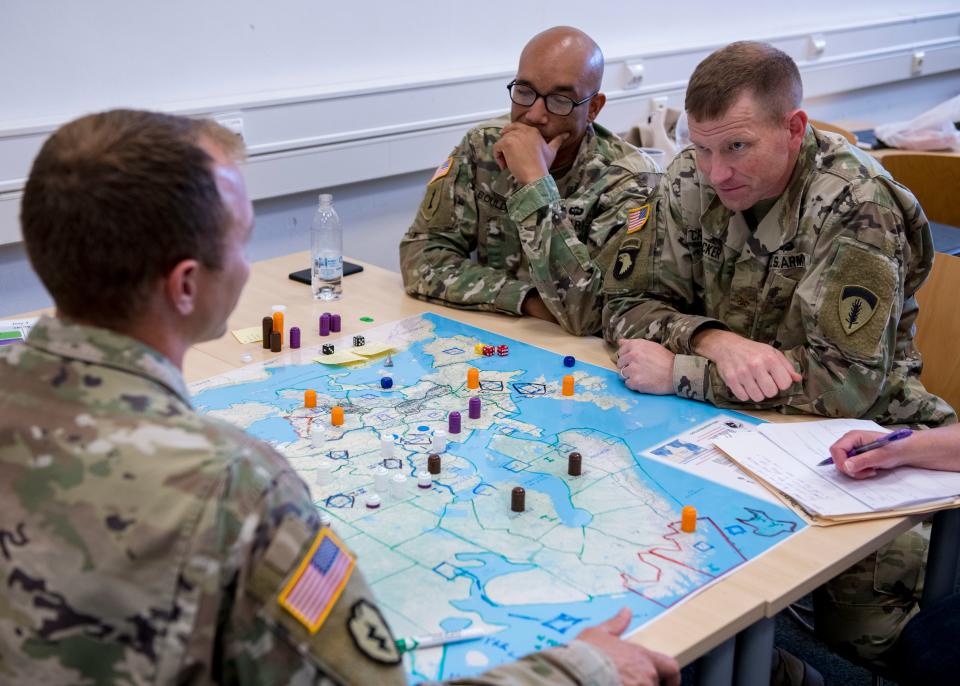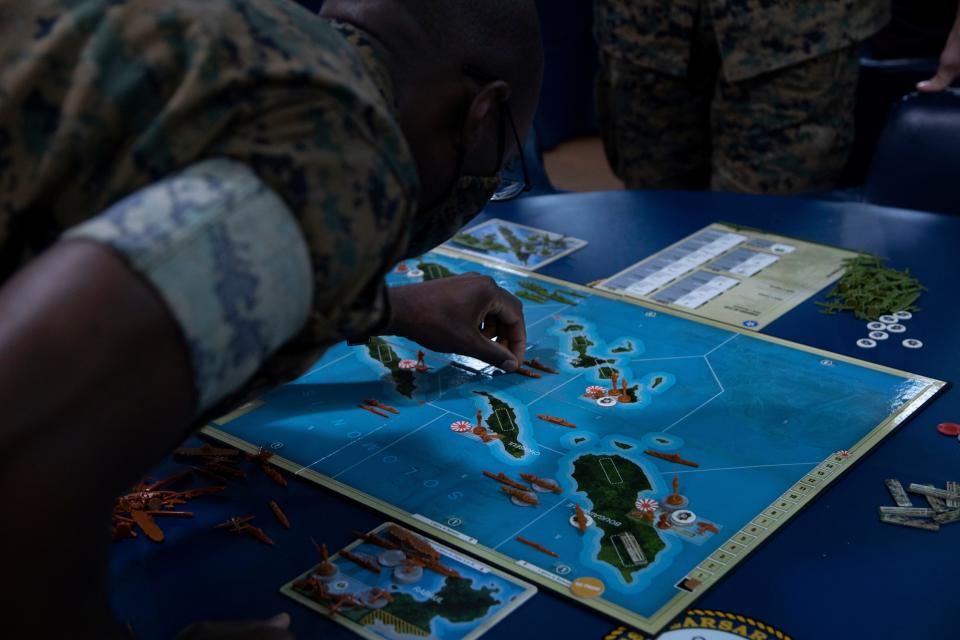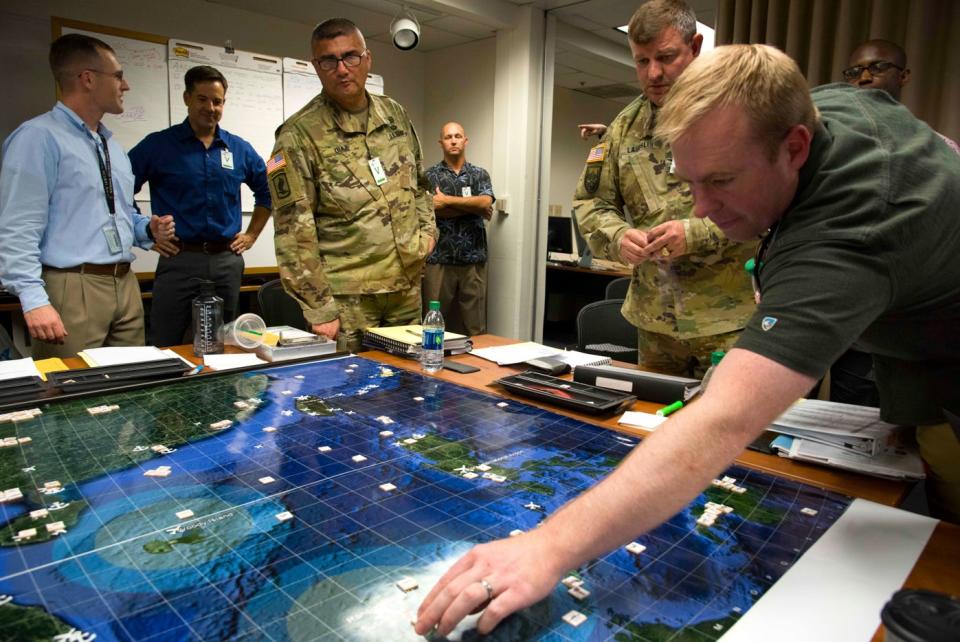-
Experts suggest generative AI could improve decision-making in wargaming.
-
Wargaming faces issues around cost, transparency and accessibility, which AI could help address.
-
Despite the potential benefits of AI, there are also limitations that users should consider.
The way militaries prepare for and fight the wars of the future could radically change as machines increasingly learn to think through complex scenarios at both tactical and strategic levels.
Introducing generative artificial intelligence into wargaming, extensive simulations used by experts, policymakers and the military to develop strategy in the event of war, has the potential to improve the decision-making process for participants.
It’s something that has appeared in fiction books about imaginary future wars, but is now also being looked at.
AI “could shape the wargames and actually the entire future of war,” Yasir Atalan, associate data fellow at the Center for Strategic and International Studies, told Business Insider. “It will allow the policy makers and planners to see what the weaknesses are, what the opportunities are, what the challenges are.”


In a piece Atalan co-wrote with Benjamin Jensen and Dan Tadross of CSIS, some of the biggest problems facing wargaming are its cost, transparency, and accessibility.
Wargames can cost thousands to millions of dollars and are somewhat exclusive because they do not always take into account the perspectives of qualified players.
“Games are about the quality of players, but the best players are often overbooked and on the move,” the CSIS report said. “Rather than relying directly on human players sitting around a table to play a game, the 21st century analyst can use generative AI and LLMs to create game agents.”
Speaking to BI about the possibilities offered by artificial intelligence, Atalan said that AI, with the right cues and data management, could help players by contributing “different perspectives from different allies” and providing probability distribution and other data points in a war game .
Wargaming is often misunderstood as a tool for predicting outcomes, but Atalan, along with other experts, emphasizes that wargaming is not about that.
“It’s about the players, the different teams and the stakeholders seeing what their policy options are, what the potential opportunities and challenges are,” he said.


The US military began placing increasing emphasis on the need for wargaming in 2015 and over the years, coupled with the hype, there has been a growing interest in the possibilities of AI. For example, in February 2023, the US military successfully allowed AI to pilot a fighter jet and participate in simulated air-to-air combat.
There is a growing realization that the two interests can be combined to realize the potential of AI.
“Wargaming and simulation remain critical tools for defense decision-makers,” concluded a 2023 study from the London-based Alan Turing Institute. “They can be used to train personnel for future conflicts, providing insight into critical decisions in warfare, peace negotiations, arms control and emergency response.”
The research also found that using AI for wargaming could potentially reduce the number of players required, speed up games, produce new strategies, better immerse players in games, and speed up game completion.
AI also has its limits in this area. A recent RAND study found that AI may not work as well in a war game if a game’s digital infrastructure is limited or if AI cannot communicate directly with the necessary computer models and simulations.
Wargaming expert Ivanka Barzashka has also raised concerns that AI could obscure explanations for actions, potentially leading to wrong conclusions.
“The current landscape of human-centric wargaming, combined with AI algorithms, faces a remarkable ‘black box’ challenge, where the reasoning behind certain outcomes remains unclear,” she wrote in a post for The Bulletin of the Atomic Scientists.
Barzashka argued that “this ambiguity, in addition to potential biases in AI training data and wargame design, highlights the urgent need for ethical governance and accountability in this evolving domain.”


Currently, Atalan told BI, it is difficult for AI to participate in wargaming on its own because it cannot perform “strategic reasoning” that can take different schools of thought into account.
Organizations like OpenAI have been preparing to create “autonomous agents,” which would be able to perform tasks on their own, but Atalan said the current version of wargaming agents can only provide the most likely answers based on an average of data compositions. and internet.
Atalan said he would like to be “careful” with autonomous agents because AI can inherit biases and biases depending on the large language models, or LLMs, on which it is trained.
“If people use these LLMs in their approach, they should be transparent and demonstrate their intentions,” Atalan said. “With new experiences and studies we will see what kind of normative biases these models have for certain actors and also in different languages.”
“It’s impossible to replace people,” Atalan said.
“People are still at the core of the whole process,” he said, “but the AI support can be very helpful for the experts for the whole thinking and decision-making processes.”
Read the original article on Business Insider